Abstract
1 Pretreatment of anaesthetized rats with intravenously administered lidoflazine (an antianginal agent) reduced the incidence and severity of ventricular arrhythmias which resulted from acute coronary artery ligation. Ventricular fibrillation was completely prevented by doses of 50 micrograms/kg and 2 mg/kg and no animal so treated died ( contrast 50% incidence of fibrillation in the controls and 30% mortality). 2 In anaesthetized greyhound dogs, lidoflazine (2 mg/kg) administration resulted in transient reductions in systemic arterial pressure, LV dP/dt max and cardiac output. Coronary sinus Po2 was markedly increased, indicating pronounced coronary vasodilatation. 3 Lidoflazine pretreatment inhibited the increase in epicardial ST-segment elevation which resulted, in dogs, from short (3 min) occlusions of the left anterior descending coronary artery. This effect was especially marked at sites where, in control occlusions, ST-segment elevation was most pronounced. 4 Lidoflazine greatly reduced the number of ventricular ectopic beats which usually resulted from more prolonged (30 min) periods of acute coronary artery occlusion. There was no ventricular fibrillation in these dogs (contrast 25% incidence in the controls). 5 Lidoflazine did not modify the ventricular fibrillation which results from reperfusion of a previously ischaemic area of the left ventricular wall.
Full text
PDF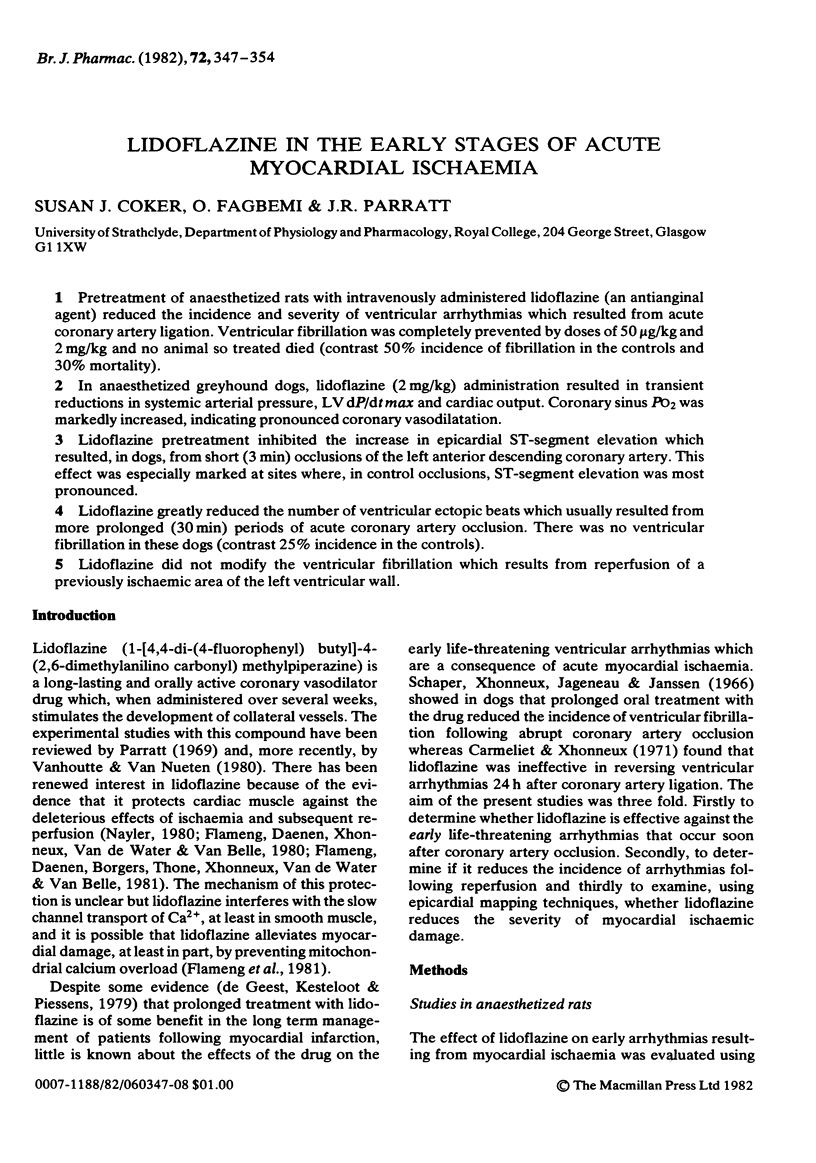
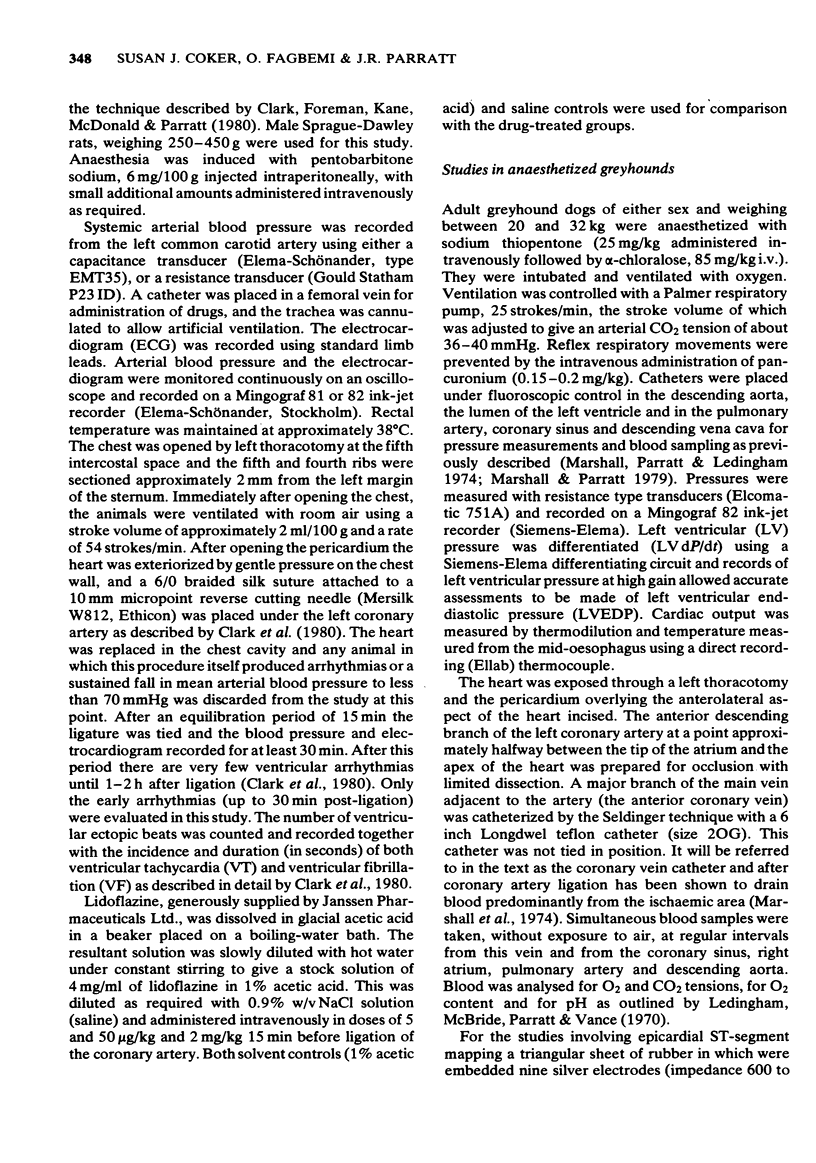
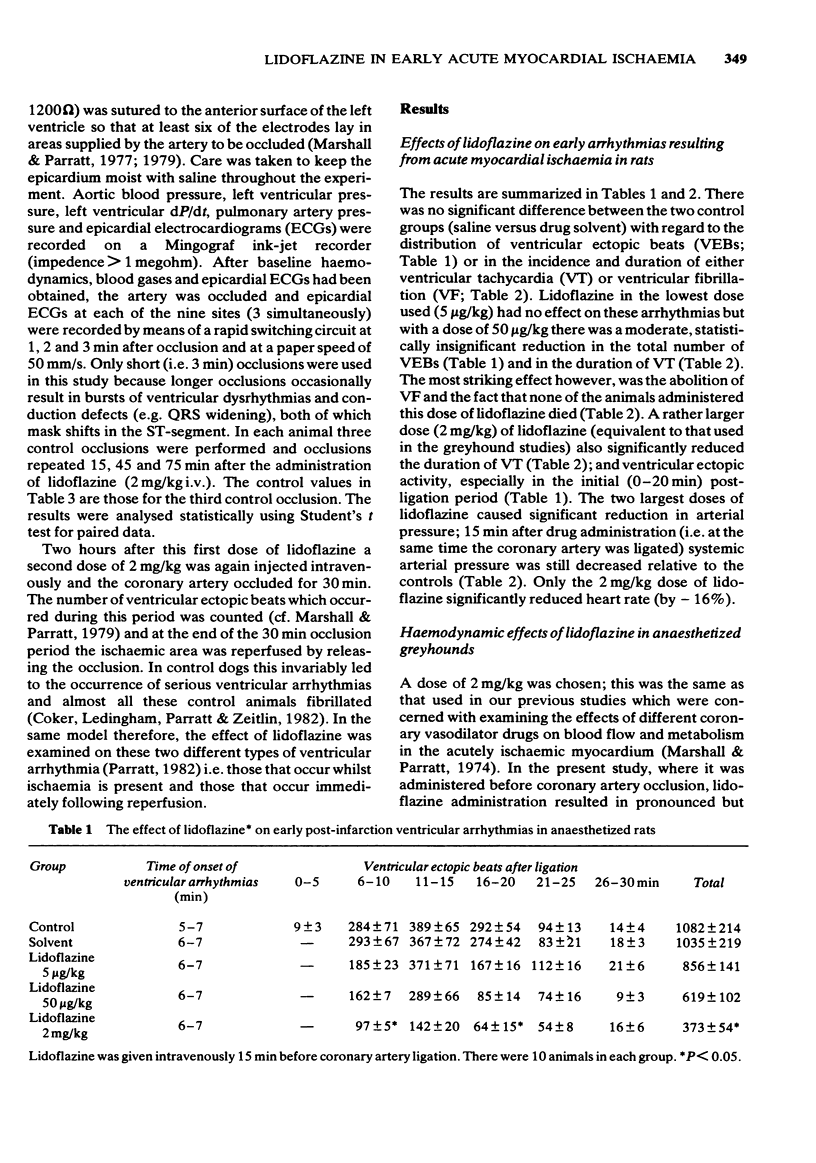
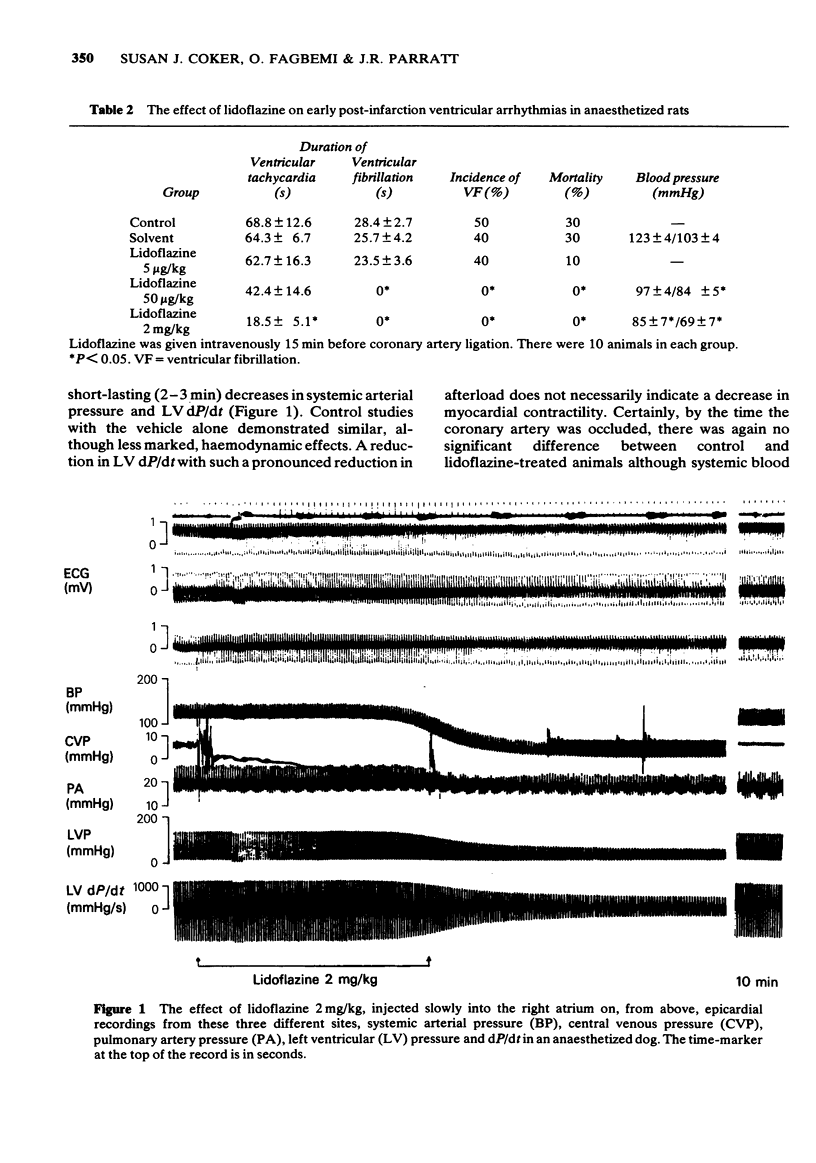
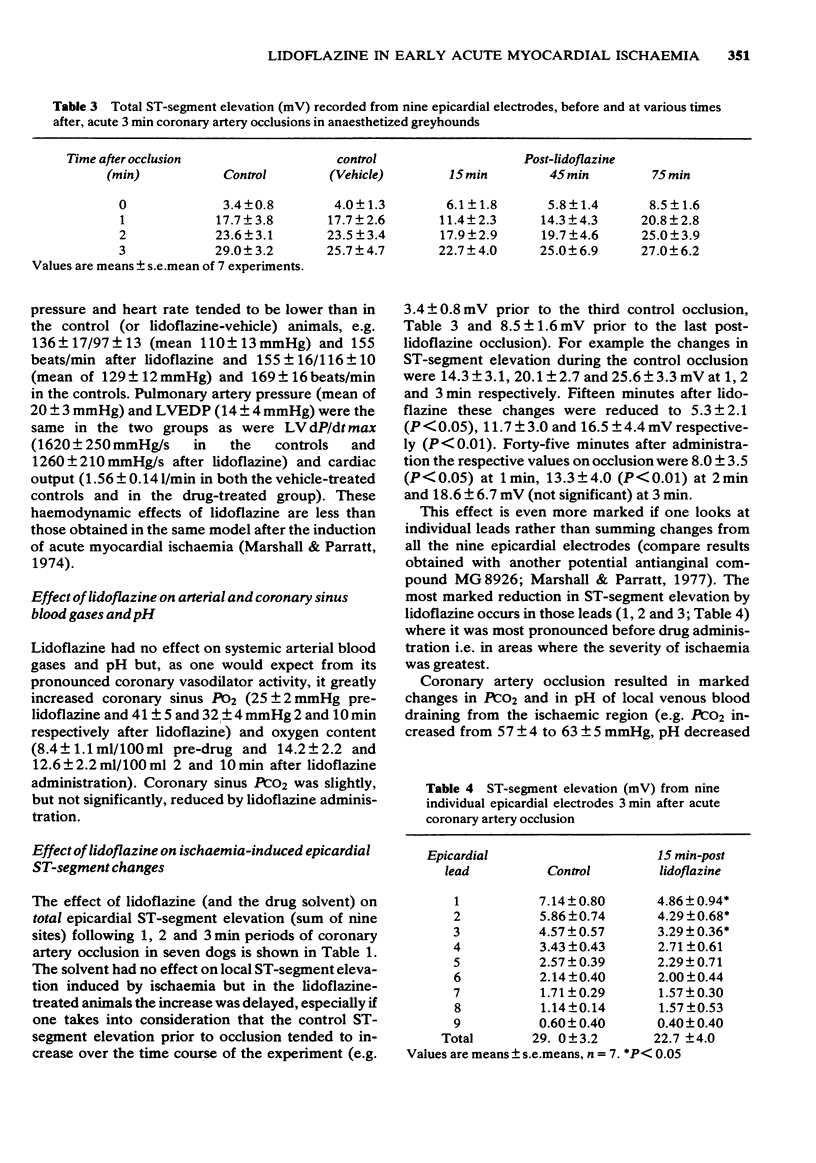
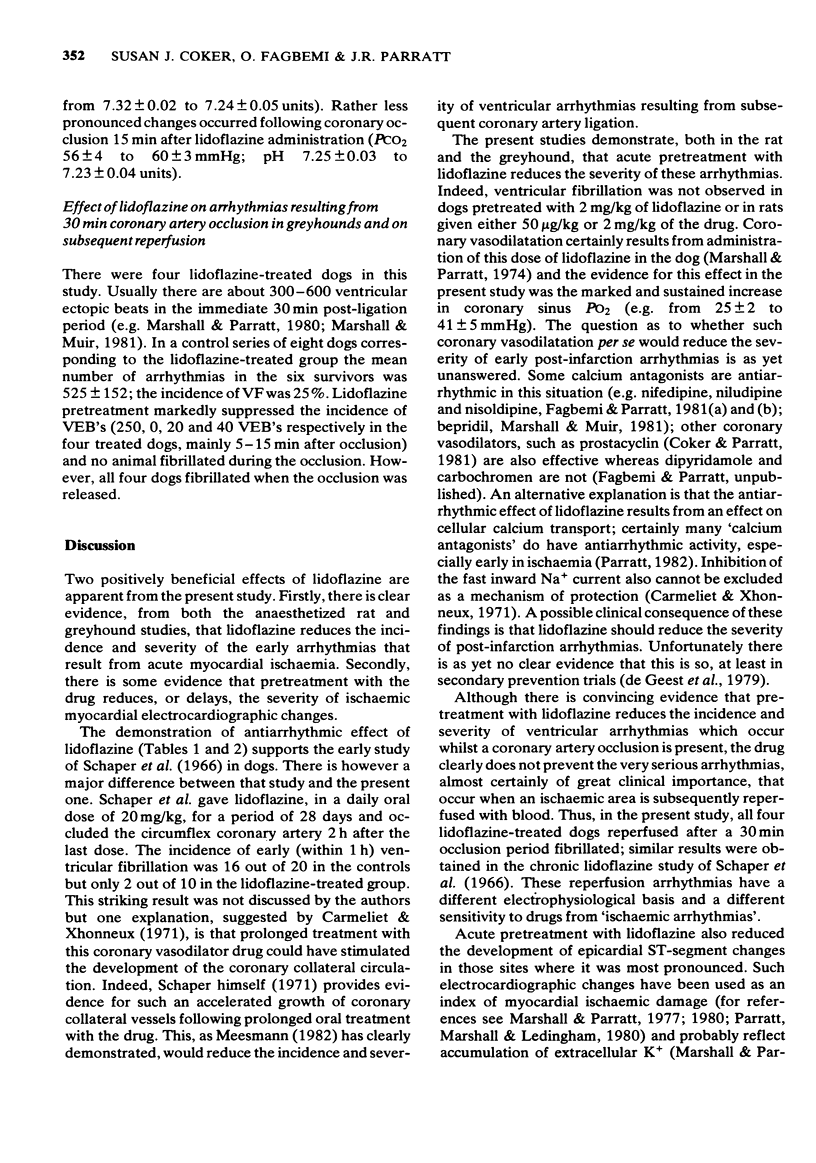
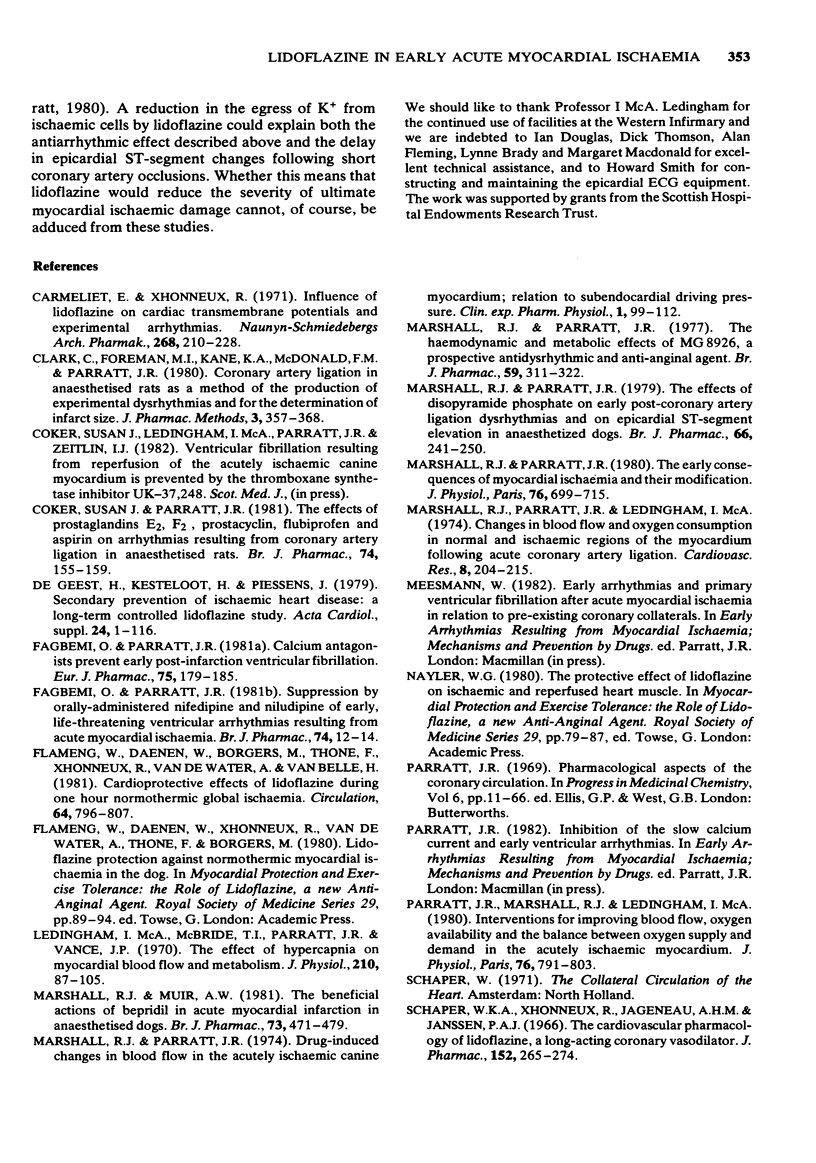
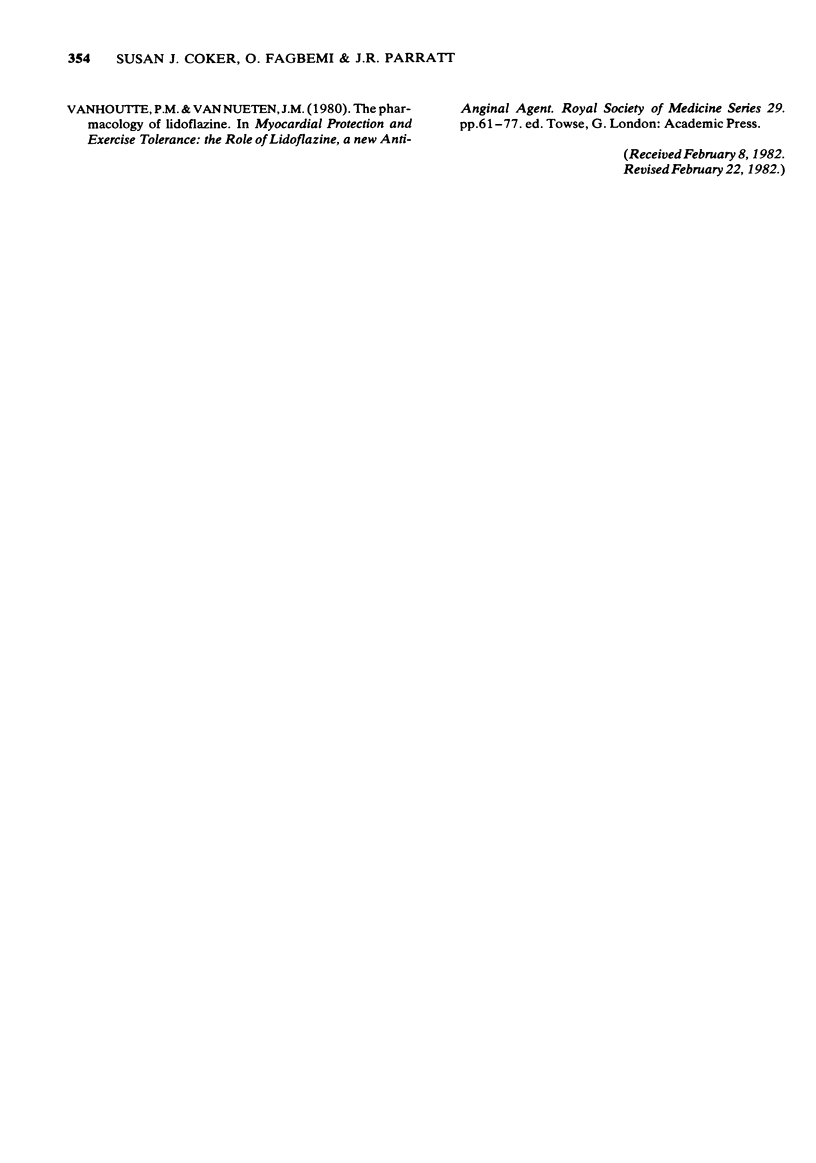
Selected References
These references are in PubMed. This may not be the complete list of references from this article.
- Carmeliet E., Xhonneux R. Influence of lidoflazine on cardiac transmembrane potentials and experimental arrhythmias. Naunyn Schmiedebergs Arch Pharmakol. 1971;268(2):210–228. doi: 10.1007/BF01020076. [DOI] [PubMed] [Google Scholar]
- Clark C., Foreman M. I., Kane K. A., McDonald F. M., Parratt J. R. Coronary artery ligation in anesthetized rats as a method for the production of experimental dysrhythmias and for the determination of infarct size. J Pharmacol Methods. 1980 Jun;3(4):357–368. doi: 10.1016/0160-5402(80)90077-7. [DOI] [PubMed] [Google Scholar]
- Coker S. J., Parratt J. R. The effects of prostaglandins E2, F2 alpha, prostacyclin, flurbiprofen and aspirin on arrhythmias resulting from coronary artery ligation in anaesthetized rats. Br J Pharmacol. 1981 Sep;74(1):155–159. doi: 10.1111/j.1476-5381.1981.tb09968.x. [DOI] [PMC free article] [PubMed] [Google Scholar]
- De Geest H., Kesteloot H., Piessens J. Secondary prevention of ischemic heart disease: a long-term controlled lidoflazine study. Acta Cardiol Suppl. 1979;(24):7–116. [PubMed] [Google Scholar]
- Fagbemi O., Parratt J. R. Calcium antagonists prevent early post-infarction ventricular fibrillation. Eur J Pharmacol. 1981 Nov 5;75(4):179–185. doi: 10.1016/0014-2999(81)90543-4. [DOI] [PubMed] [Google Scholar]
- Fagbemi O., Parratt J. R. Suppression by orally-administered nifedipine, nisoldipine and niludipine of early, life-threatening ventricular arrhythmias resulting from acute myocardial ischaemia. Br J Pharmacol. 1981 Sep;74(1):12–14. doi: 10.1111/j.1476-5381.1981.tb09949.x. [DOI] [PMC free article] [PubMed] [Google Scholar]
- Flameng W., Daenen W., Borgers M., Thone F., Xhonneux R., van de Water A., van Belle H. Cardioprotective effects of lidoflazine during 1-hour normothermic global ischemia. Circulation. 1981 Oct;64(4):796–807. doi: 10.1161/01.cir.64.4.796. [DOI] [PubMed] [Google Scholar]
- Ledingham I. M., McBride T. I., Parratt J. R., Vance J. P. The effect of hypercapnia on myocardial blood flow and metabolism. J Physiol. 1970 Sep;210(1):87–105. doi: 10.1113/jphysiol.1970.sp009197. [DOI] [PMC free article] [PubMed] [Google Scholar]
- Marshall R. J., Muir A. W. The beneficial actions of bepridil in acute myocardial infarction in anaesthetized dogs. Br J Pharmacol. 1981 Jun;73(2):471–479. doi: 10.1111/j.1476-5381.1981.tb10445.x. [DOI] [PMC free article] [PubMed] [Google Scholar]
- Marshall R. J., Parratt J. R. Drug-induced changes in blood flow in the acutley ischaemic canine myocardium;relationship to subendocardial driving pressure. Clin Exp Pharmacol Physiol. 1974 Mar-Apr;1(2):99–112. doi: 10.1111/j.1440-1681.1974.tb00531.x. [DOI] [PubMed] [Google Scholar]
- Marshall R. J., Parratt J. R., Ledingham I. M. Changes in blood flow and oxygen consumption in normal and ischaemic regions of the myocardium following acute coronary artery ligation. Cardiovasc Res. 1974 Mar;8(2):204–215. doi: 10.1093/cvr/8.2.204. [DOI] [PubMed] [Google Scholar]
- Marshall R. J., Parratt J. R. The early consequences of myocardial ischaemia and their modification. J Physiol (Paris) 1980;76(7):699–715. [PubMed] [Google Scholar]
- Marshall R. J., Parratt J. R. The effects of disopyramide phosphate on early post-coronary artery ligation dysrhythmias and on epicardial ST-segment elevation in anaesthetized dogs. Br J Pharmacol. 1979 Jun;66(2):241–250. doi: 10.1111/j.1476-5381.1979.tb13672.x. [DOI] [PMC free article] [PubMed] [Google Scholar]
- Marshall R. J., Parratt J. R. The haemodynamic and metabolic effects of MG 8926, a prospective antidysrhythmic and antianginal agent. Br J Pharmacol. 1977 Feb;59(2):311–322. doi: 10.1111/j.1476-5381.1977.tb07494.x. [DOI] [PMC free article] [PubMed] [Google Scholar]
- Parratt J. R., Marshall R. J., Ledingham I. M. Interventions for improving blood flow, oxygen availability and the balance between oxygen supply and demand in the acutely ischaemic myocardium. J Physiol (Paris) 1980;76(7):791–803. [PubMed] [Google Scholar]
- Parratt J. R. Pharmacological aspects of the coronary circulation. Prog Med Chem. 1969;6:11–66. doi: 10.1016/s0079-6468(08)70196-6. [DOI] [PubMed] [Google Scholar]
- Schaper W. K., Xhoneux R., Jageneau A. H., Janssen P. A. The cardiovascular pharmacology of lidoflazine, a long-acting coronary vasodilator. J Pharmacol Exp Ther. 1966 May;152(2):265–274. [PubMed] [Google Scholar]


